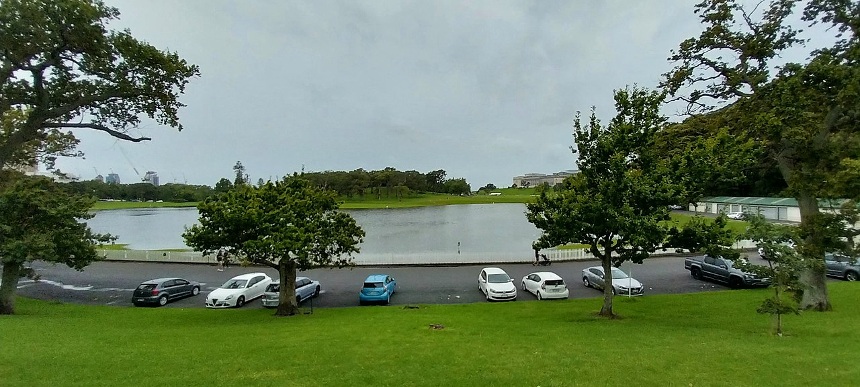Rapid urbanisation over decades has created a sprawling, complex, and vulnerable city. The Auckland floods in January 2023 are dubbed the worst in the city’s modern history.
NIWA described it as a 1 in 200-year event, where an entire summer’s worth of rain fell in a single day, overwhelming Auckland’s stormwater system as the amount of rain far exceeded its capacity.
According to the Renews article, “Auckland rivers and wetlands were paved over. Now we are paying for it,” the city’s flooding results from paving over its rivers and wetlands.
The Renews article explains:
Before colonisation and urbanisation of the city, nearly all of its suburbs have their own river and wetland area. Some of these areas have been made into a park or paved roads. The Auckland Domain used to be a large wetland, and Queen Street in Auckland’s CBD used to be a stream. A massive downpour in January has momentarily reclaimed these areas, filling them up with water again. City planners observed that some suburbs managed to duck flooding not because of luck but because they have preserved their wetlands as much as possible.
In the aftermath of the January floods, there have been talks about “daylighting” some of Auckland’s streams and rivers or, in other words, uncovering these buried waterways and restoring their natural environment to improve water management and ecology. Other plans include applying the sponge city approach by creating more porous surfaces and planting more trees and vegetation to absorb and retain water runoff. The article says these initiatives could mean saving money spent on replacing stormwater pipes repeatedly.

The article highlights the importance of applying a contemporary stormwater management approach, restoring the natural environment and improving urban stream health.
This can increase their capacity to catch, absorb and retain runoff from impervious surfaces, improving the city’s hydrological cycle and reducing flooding.
As more people live in cities today, the threat of floods must be addressed. Cities rely on their urban stormwater management system as a flood control measure. However, planners and engineers sometimes overlook the complexities and interactions around the whole urban catchment to quantify flood risk.
Building resilience in stormwater management systems is gaining traction due in part to addressing the increasing climate change effects and ensuring that the design and infrastructure remain robust against extreme events.
A paper by Nariman Valizadeh, Asaad Shamseldin, and Liam Wotherspoon, “Indicator-based Hydrological Resilience Framework for Urban Stormwater Management Systems”, published in April 2023 in Research Square, provides a novel framework to measure the stormwater system resilience because of changes to the hydrological characteristics of urban developed catchments. Hydrological characteristics of the urban catchment are based on the amount of impervious and porous surfaces.
According to the paper, various approaches have been developed to determine the hydrological performance of urban catchments with different land covers and land uses. But these studies have mainly focussed on the development of tools to assess the hydrological response of the catchment to the effect of urbanisation. However, there is no clear existing approach to link the changes in the hydrological characteristics of urban catchments to the resilience of stormwater management systems to flooding.
The study’s stormwater management system comprises the stormwater infrastructure, stormwater management devices and the contributing catchment. In an urban area, a catchment can provide a certain level of absorption capacity, known as the hydrology loss of the catchment, based on its hydrological characteristics.
Depending on the magnitude of the rainfall event, the hydrology loss of the catchment can influence the runoff volume and peak flow that will load the stormwater infrastructure and overland flow paths, resulting in changes in the absorption capacity of the urban catchment and eventually the resilience of urban stormwater management system.
Therefore, an urban catchment’s hydrological characteristics were considered a component that needed to be quantified to analyse the resilience of stormwater management systems.
Read more about the study by clicking the link in the “Source” section below.
Sources:
Valizadeh, N., Shamseldin, A., & Wotherspoon, L. (2023, April 3). Indicator-based Hydrological Resilience Framework for Urban Stormwater Management Systems. Research Square. Retrieved from https://doi.org/10.21203/rs.3.rs-2589585/v1
Smith, Z. (2023, February 2). Auckland’s rivers and wetlands were paved over. Now we are paying for it. Re: Retrieved from https://www.renews.co.nz/aucklands-rivers-and-wetlands-were-paved-over-now-we-are-paying-for-it/
Auckland suffers wettest month in history. (2023, February 2). NIWA. Retrieved from https://niwa.co.nz/news/auckland-suffers-wettest-month-in-history
PHOTO CREDIT: Lake formed from floodwaters on top of cricket pitches in Pukekawa Auckland Domain from Carlton Gore Road by Spil030 – Own work, CC BY-SA 4.0, https://commons.wikimedia.org/w/index.php?curid=128264811



Leave a Reply